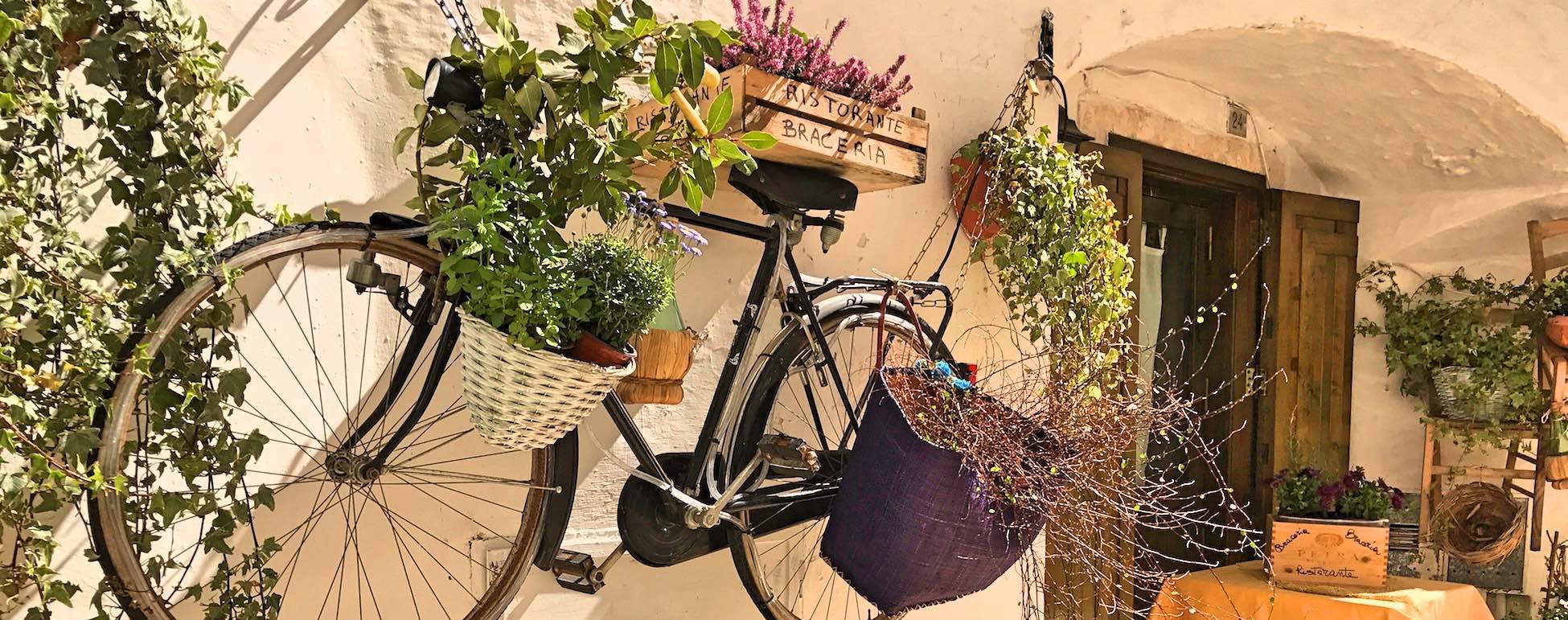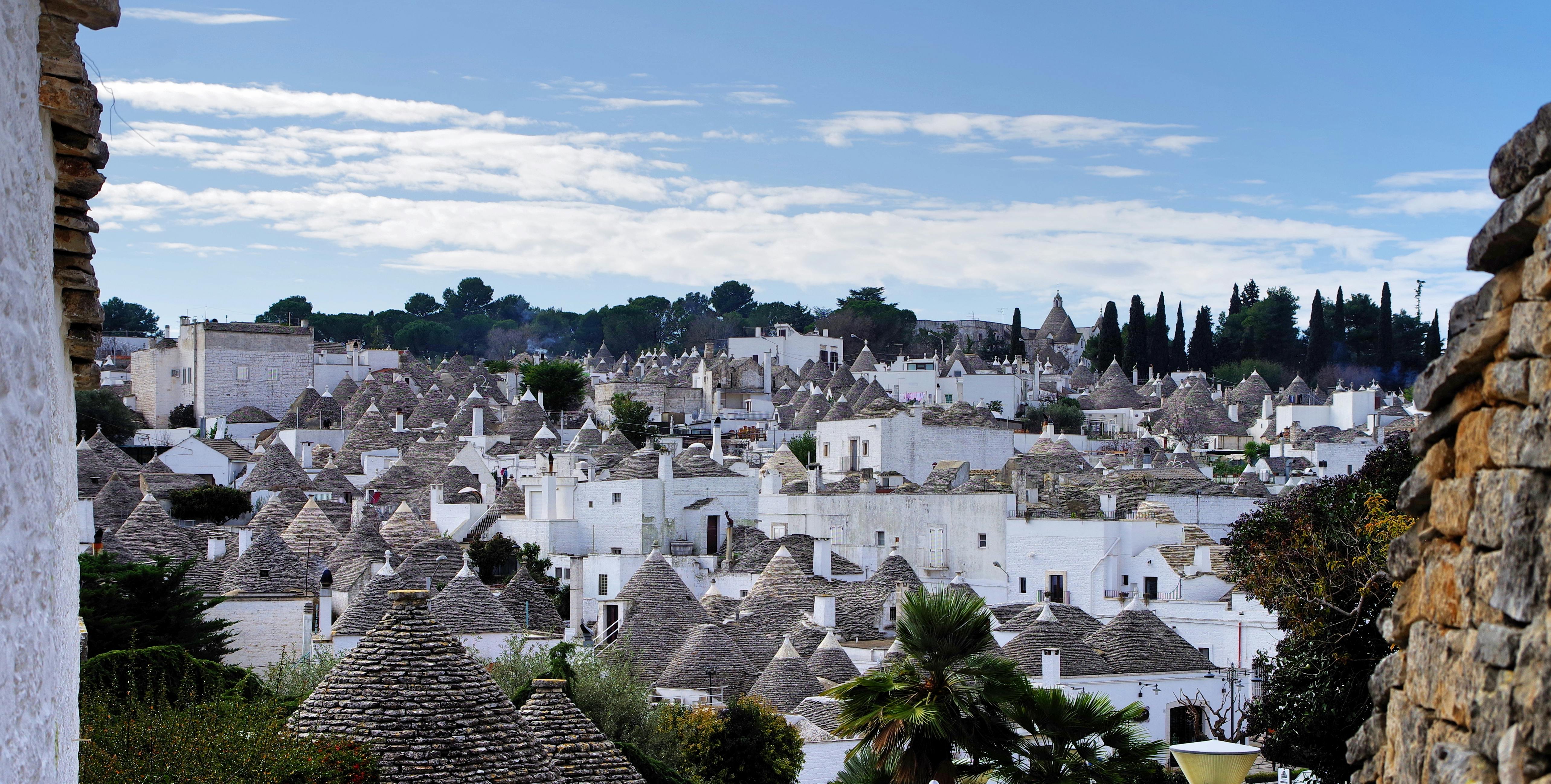A World Heritage Site since 1982, Florence is universally known as the City of Art, thanks to the numerous prominent personalities who have created works here known and admired throughout the world.
Thanks to the finds found in this area we know that the city of Florence has been inhabited since Prehistory, even if the first populations to settle there were the Etruscans first, and the Romans later.
In medieval times it became independent from any dominion, even if it suffered numerous internal conflicts due to the fights between the Guelph and Ghibelline factions (of which Dante Alighieri was also a member). From 1437 Florence was reigned by the Medici lordship which made it more prosperous than ever.
In 1861 the city was annexed to the Kingdom of Italy and in 1965 it became capital for the next six years, until the title was transferred to the city of Rome.
You could decide to spend a weekend in Florence or discover it joining one of our tours:
⇒Trekking on the Way of Gods: from Bologna to Firenze
What to see in Firenze
We have prepared a list of things to see in Florence to enjoy its beauties to the best. Why not decide to dedicate a day to visit Florence? Thanks to the immeasurable wonders it offers, it is considered the "City of Art". Some of these absolutely deserve to be visited.
- Cathedral of Santa Maria del Fiore
- Piazza della Signoria
- Palazzo Pitti
- The Square and Church of Santa Maria Novella
And now let's set off together to discover the most incredible places in Florence!

Cattedrale di Santa Maria del Fiore
It has been the symbol of Florence since its construction, completed in 1436.
What catches the attention first about this cathedral is its grandeur, in fact, despite being made up of different blocks, the use of the same materials and colors for the exterior gives the sensation of being in front of a single and gigantic block.
The interior is much more austere and simple, even if the largest glass complex in Italy creates a breathtaking effect of light and color. Furthermore, it is rich in mosaics and biblical images painted and sculpted by artists of the caliber of Donatello, Lorenzo Ghiberti and Paolo Uccello.
Obviously, one of the most striking parts is Brunelleschi's majestic dome. This is completely decorated internally with frescoes depicting the Last Judgment, while externally it appears "more magnificent and inflating" thanks to the arrangement of the bricks in the shape of a herringbone.
Did you know that numerous legends have been created over the centuries around the history of the construction of the dome of Santa Maria del Fiore? It is said, in fact, that when Brunelleschi was commissioned to build the dome, he initially refused, inducing the clients to organize a competition to establish the best architect in Europe. But when he saw that no one was suitable and worthy of him, Brunelleschi ran and won both the title and the position.
Piazza della Signoria
Piazza della Signoria is the main square of Florence and the center of the social life of the Florentines. The "L"-shaped square is surrounded and adorned by wonderful buildings, such as the Palazzo Vecchio and the Loggia della Signoria, an imposing architectural construction from the end of the fourteenth century, and imposing statues. Among the statues that can be admired here, the "Marzocco" and "La Judith and Holofernes" stand out, by Donatello, the "Perseus", created by Benvenuto Cellini, the "Fountain of Neptune" created by Bartolomeo Ammannati and the Equestrian Statue of Cosimo I” by Giambologna.
A curiosity that leaves everyone stunned is that the fountain that can be admired today, around which men and women have gathered since ancient times, was used as a wash house in the 16th century and was the subject of vandalism on 25 January 1580. In 1592 the protective railing was placed to prevent it from being used as a drinking trough by animals at the Dogana in Palazzo Vecchio. Precisely for this reason, behind the Neptune Fountain it is possible to find a plaque that prohibited rinsing clothes and dirtying the historical fountain.
Pitti Palace
Palazzo Pitti an ancient Renaissance palace dating back to 1458. The building, after having been home first to the banker Luca Pitti, then to the Medici and finally to the Savoys, is currently home to a state museum.
Inside it is possible to visit the Palatine Gallery, the old royal apartments, the Gallery of Modern Art and the Museum of Fashion and Costume, as well as another series of specialized museums.
In fact, Palazzo Pitti represents an added work of art, thanks to its splendid external architecture and the monumental frescoes inside.
Church of Santa Maria Novella
The imposing and wonderful Church of Santa Maria Novella stands on the homonymous square and has been considered since ancient times the point of reference for the brotherhood of the Dominican Friars.
The façade is covered with marble in a mainly Renaissance style, enriched with some Gothic influences. These are present above all inside the church, where you can admire pointed arches and numerous stained glass windows.
What to do in Florence - the Slow Active Tours proposal
Once you have discovered the wonders hidden in the streets of the historic center of Florence, the time has come to get to the heart of the sounds and smells in the shadow of the Dome of Santa Maria del Fiore. For this reason we have prepared a list of things to do in Florence that you absolutely cannot miss!
The Uffizi Gallery
The Uffizi Gallery is one of the most important museums in the world for the quantity and quality of the works collected. You will be able to admire some of the most important works of the Italian Renaissance, works by great artists such as Giotto, Caravaggio, Leonardo da Vinci, Tiziano and Bronzino, as well as the largest collection of the great Raffaello and Botticelli. Most of the works present today come from the collections of the Medici family, who were great enthusiasts and promoters of immeasurable masterpieces.
The works are organized in chronological order, so as to give an idea of the development of art in this wonderful city.
What many don't know is that Stendhal syndrome, also known as "Florence syndrome", had its first case inside this museum. The famous writer Stendhal, in fact, surrounded by such artistic beauty, began to feel tachycardia, malaise and discomfort, until he reached a certain ecstasy.
Ponte Vecchio
Once you arrive in Florence, a walk through the historic streets and majestic buildings that compose it is almost obligatory. This way you can enjoy every beauty that the city has to offer.
Walking, you will surely arrive at Ponte Vecchio, the symbol of the city, which crosses the Arno river. The bridge has been defined as a national artistic heritage thanks to its beauty and notoriety which attracts numerous passers-by every day.
The peculiarity of this bridge is that, despite the numerous disastrous events that have befallen the city, it has somehow always remained intact. In fact, it is said that even Hitler, who was dazzled by the beauty of Ponte Vecchio, decided to spare it from the bombings.
Galleria dell'Accademia
Among the wonderful museums present in the city, we absolutely cannot forget the Galleria dell’Accademia. This, in particular, preserves some of Michelangelo's most important works, including the unmissable original David.
Inside the gallery it is also possible to visit the Museum of Musical Instruments which preserves and displays the most important instruments recovered from the Luigi Cherubini Conservatory of Florence.
Via degli Dei
If, however, you are a fan of trekking and nature walks you can treat yourself to a splendid experience by walking along the Via degli Dei. This wonderful route unites the cities of Florence and Bologna through the Tuscan-Emilian Apennines, allowing its visitors to enjoy a unique and breathtaking landscape.
Popular festivals and celebrations of Firenze
Although Florence is a city full of festivals and exhibitions throughout the year, the main ones are concentrated in the summer and autumn periods. Between spring and summer the Teatro del Maggio Musicale Fiorentino cannot go unnoticed. During these months (May, June and July) it is possible to attend numerous theater festivals which stage operas, ballets and prose shows.
In the month of October, the Festival of Creativity takes place in the heart of the city, a festival which, thanks to the help of numerous national and international guests, stages a series of meetings, debates and film forums regarding the theme of creativity in the fields of art, technology and in all fields of knowledge.
Another peculiarity of Florence is that it celebrates two New Years. In fact, before the advent of the Gregorian calendar, March 25 was considered the day of the Annunciation and therefore the beginning of the year. It's still like this in Florence! For this reason, every March 25th, a historical procession takes place with costumed figures accompanied by a band and famous flag-wavers.
Typical dishes of Florence
Florentine cuisine is mainly based on a few main ingredients: meat, olive oil, Tuscan bread and Chianti wine. Thanks to these ingredients, the main recipes of the area are born, such as the Florentine steak, farinata and sweet and savory schiacciata. The city's signature dish is the famous lampredotto, which is a flatbread filled with bovine innards (usually the stomach). Despite the uninviting description, lampredotto is one of the most loved dishes not only by locals, but also by all the numerous visitors who come to the city in search of its delicacies.
We certainly cannot forget the famous Tuscan ribollita. A poor dish, created to avoid farmers' waste, it is today considered one of the tastiest soups in the region. Inside you can find various garden products, such as beans, cabbage, potatoes, carrots and stale bread. This, according to the traditional recipe, should be left to boil for at least 24 hours before being tasted. A mouth-watering recipe!
Eating and Drinking in Florence
Among the many restaurants in the center of Florence, we recommend some that are worth visiting:
Gustarium in Via Dei Cimatori street 24/r. Excellent quality pizzas, prepared with love and attention to detail, are the real ace in the hole of this pizzeria located in the heart of Florence.
I’ Girone De' Ghiotti in Via dei Cimatori street 23/Rosso. Tuscan fast food that offers its customers a vast variety of Tuscan Schiacciata stuffed with first choice and high quality ingredients. It's almost impossible to choose your favorite!
Osteria Vecchio Cancello in Guelfa street 138r. A restaurant with a magical atmosphere and helpful staff, they are the setting for the excellent traditional Florentine dishes that can be tasted in this delightful restaurant.
So what are you waiting for? Get your stuff ready and off you go!





